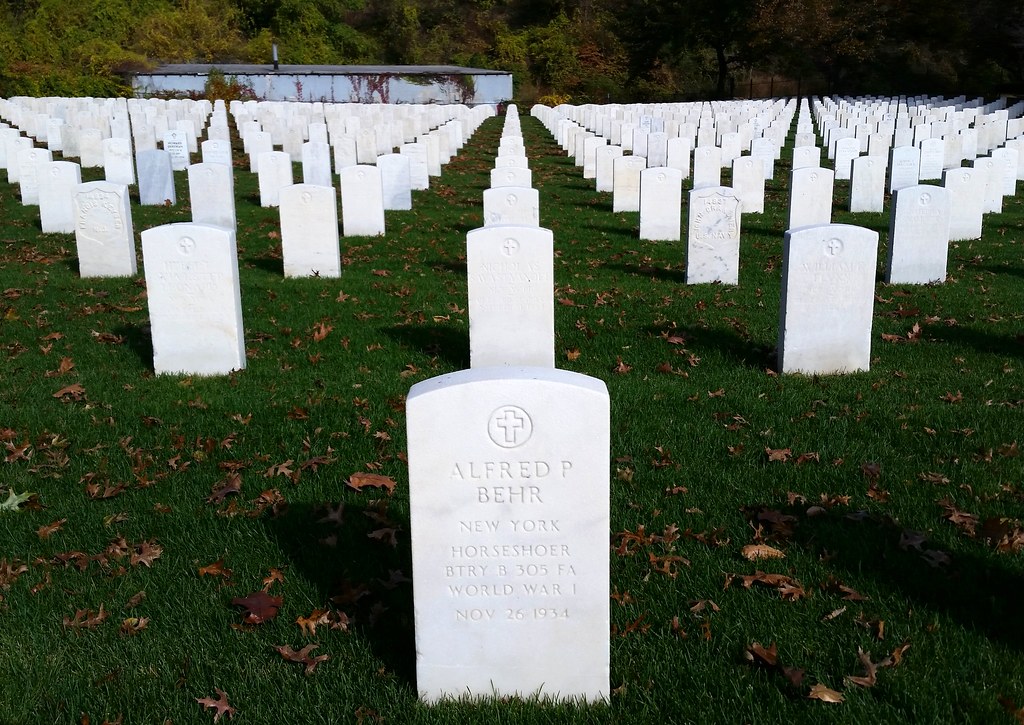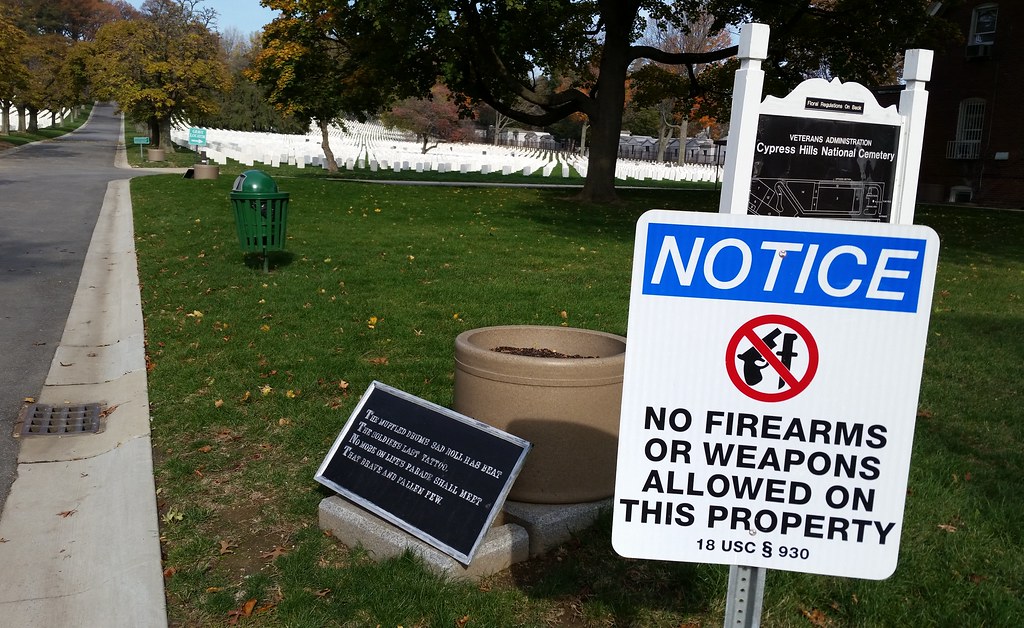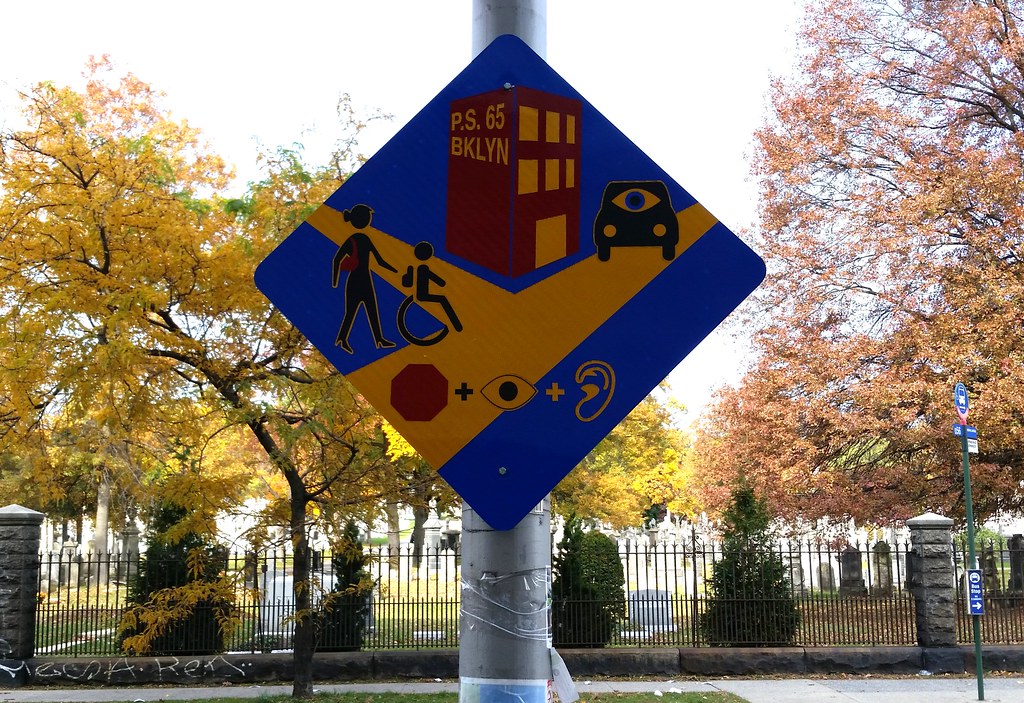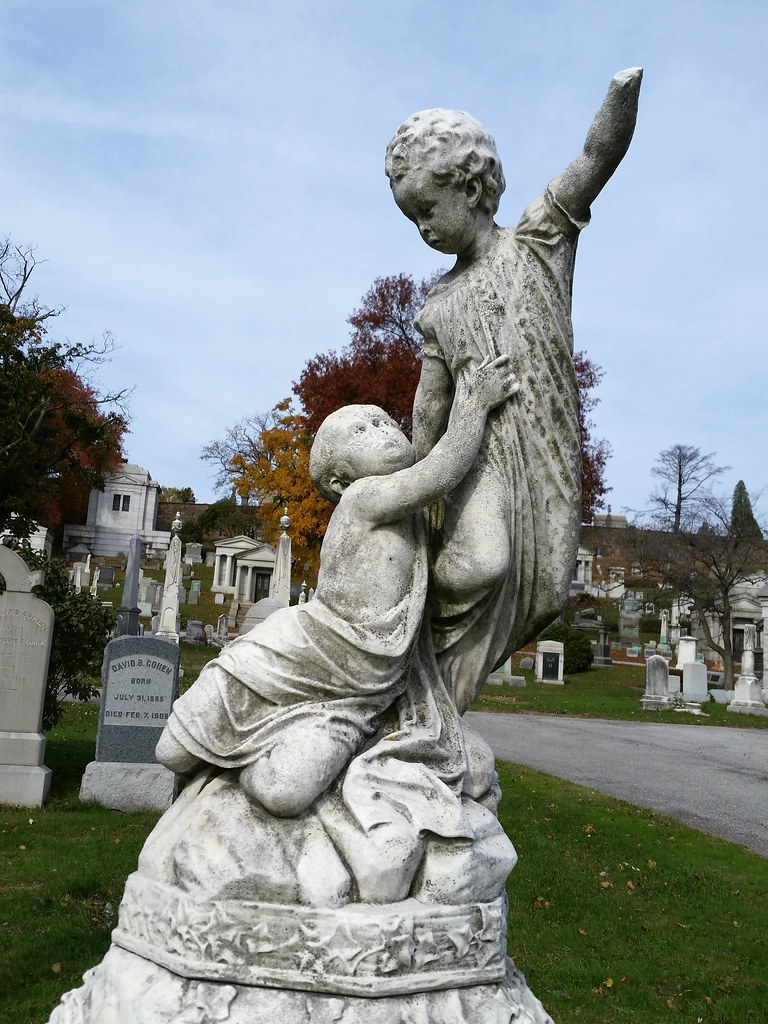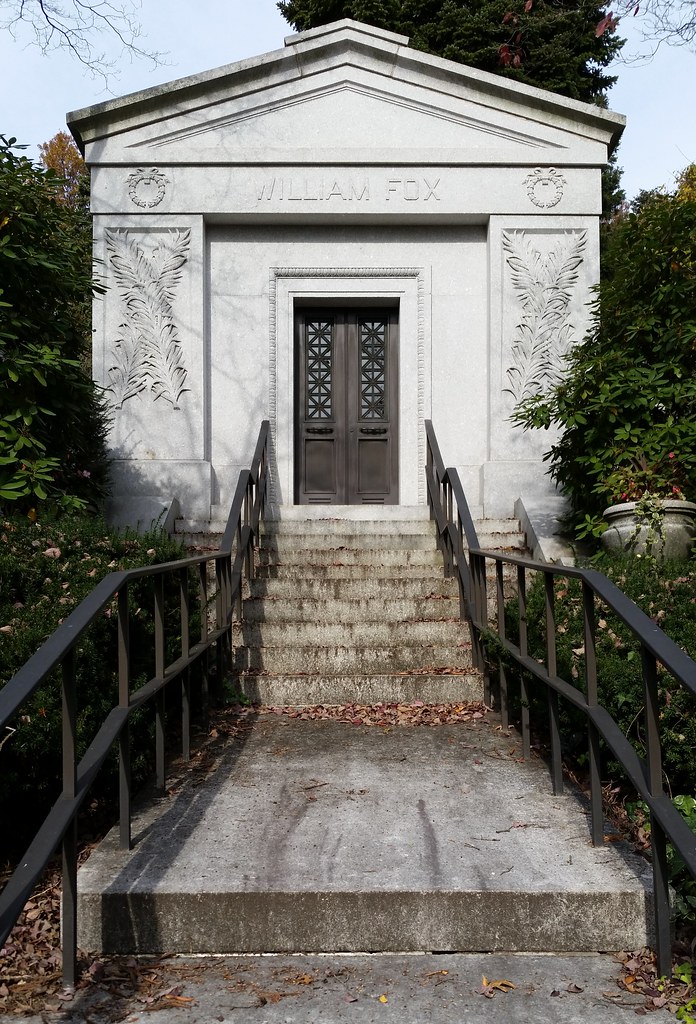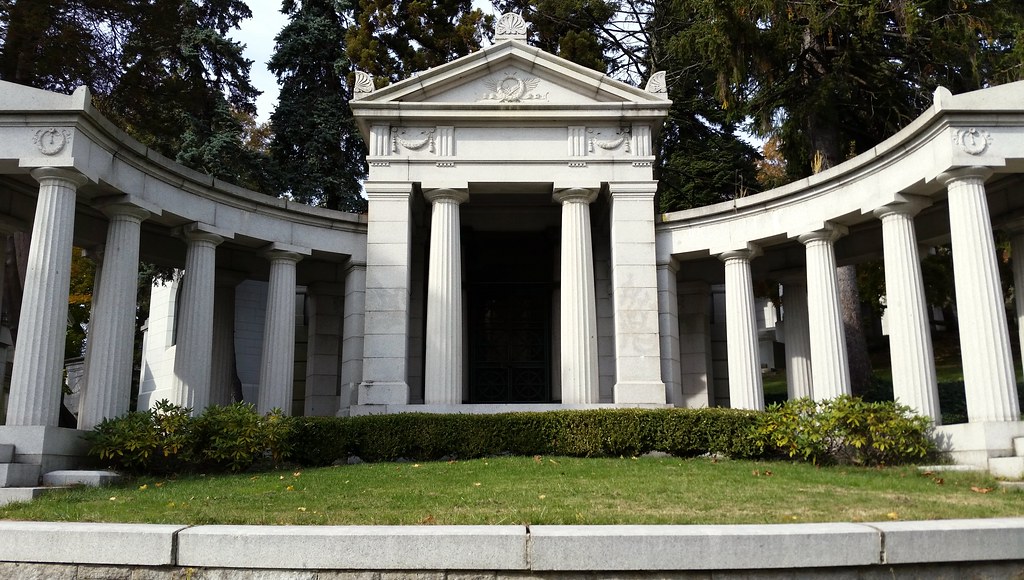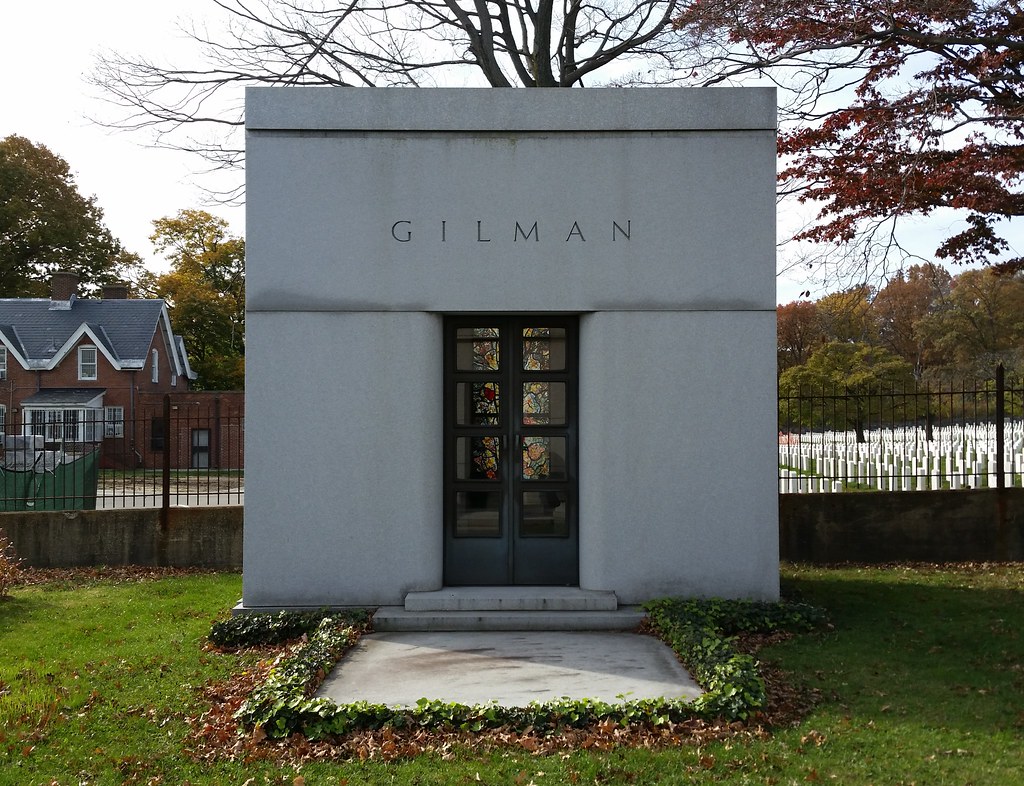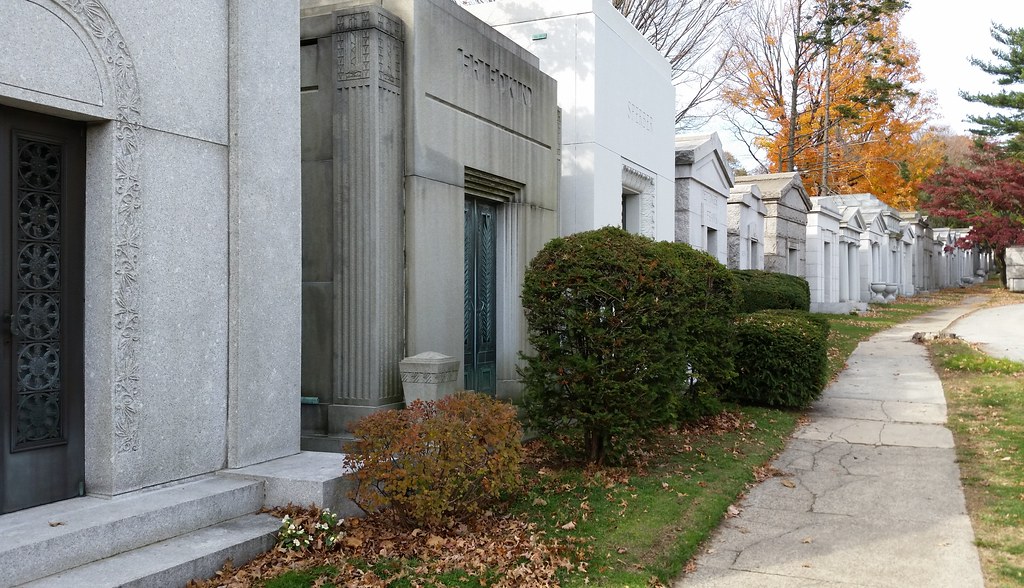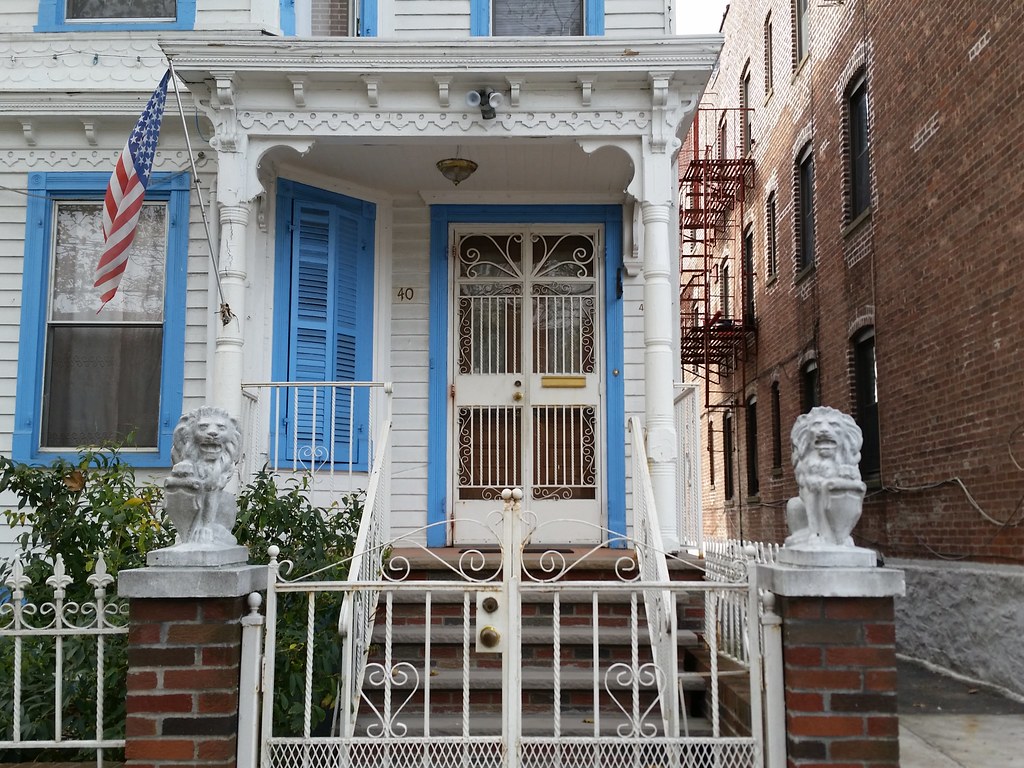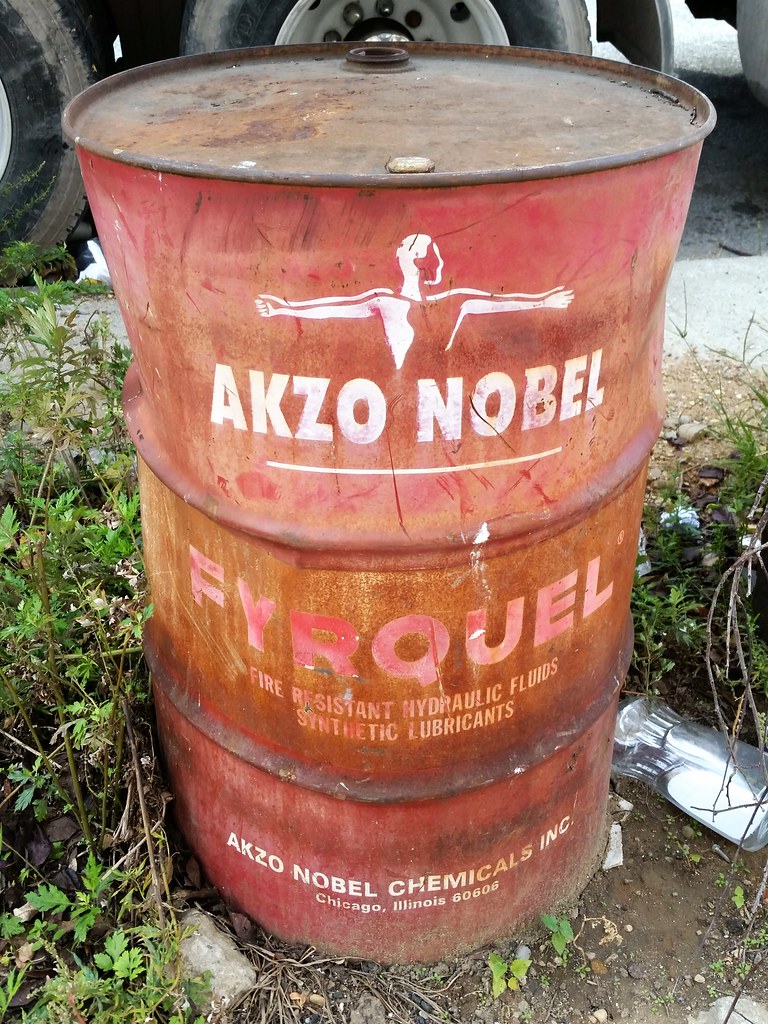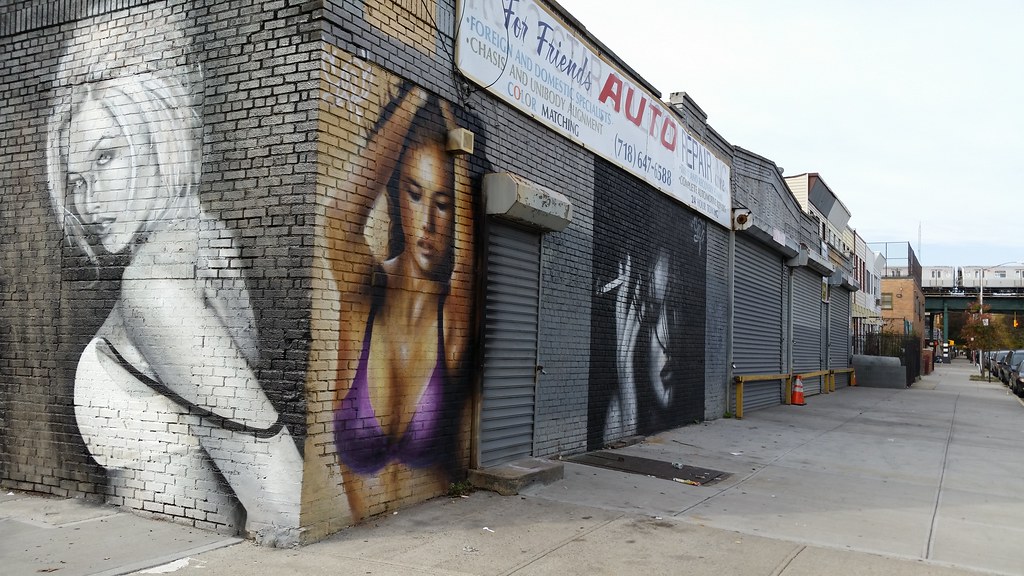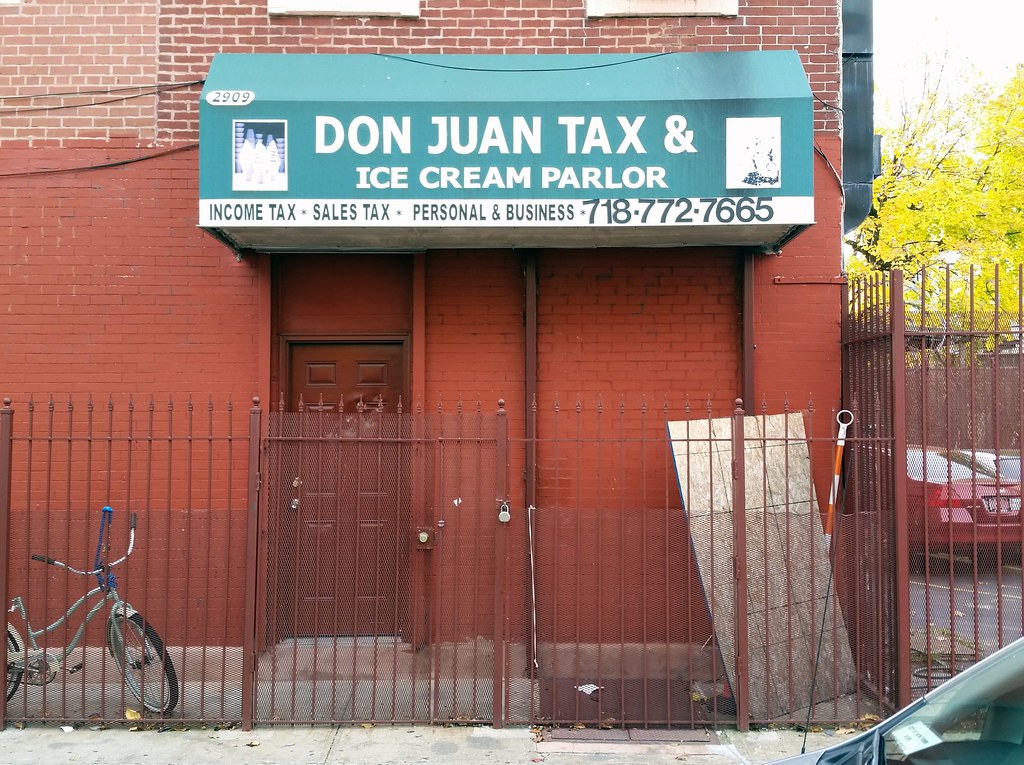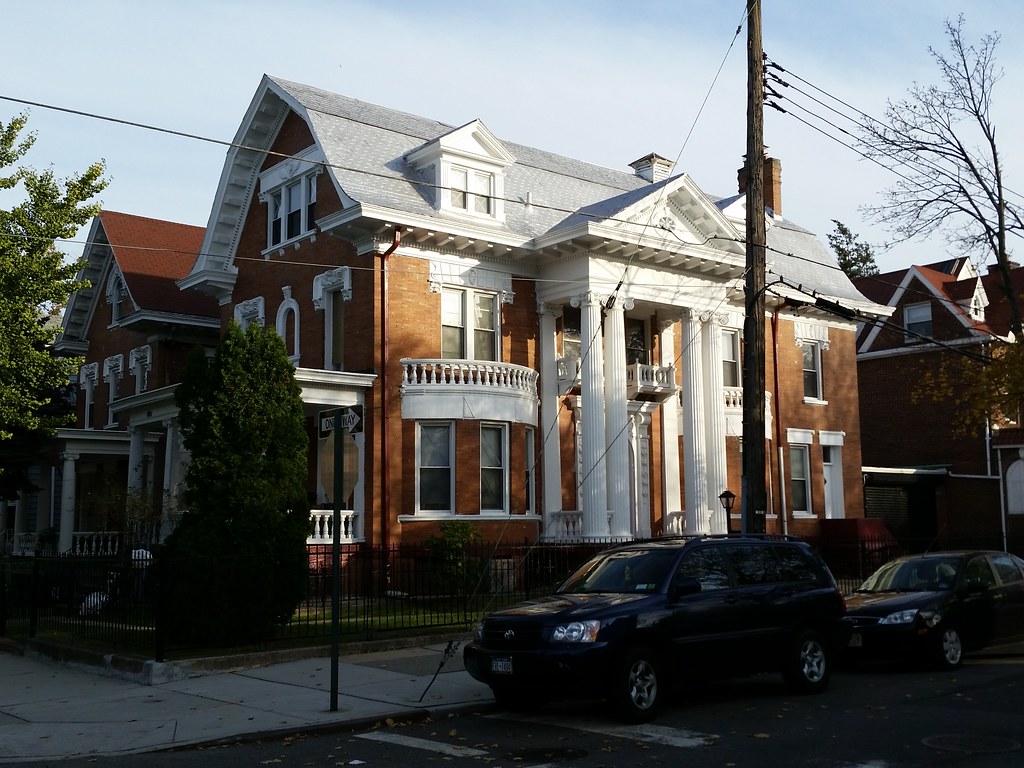
The plaque reads: "The markers in this memorial area honor veterans whose remains have not been recovered or identified, were buried at sea, donated to science, or cremated and the ashes scattered."
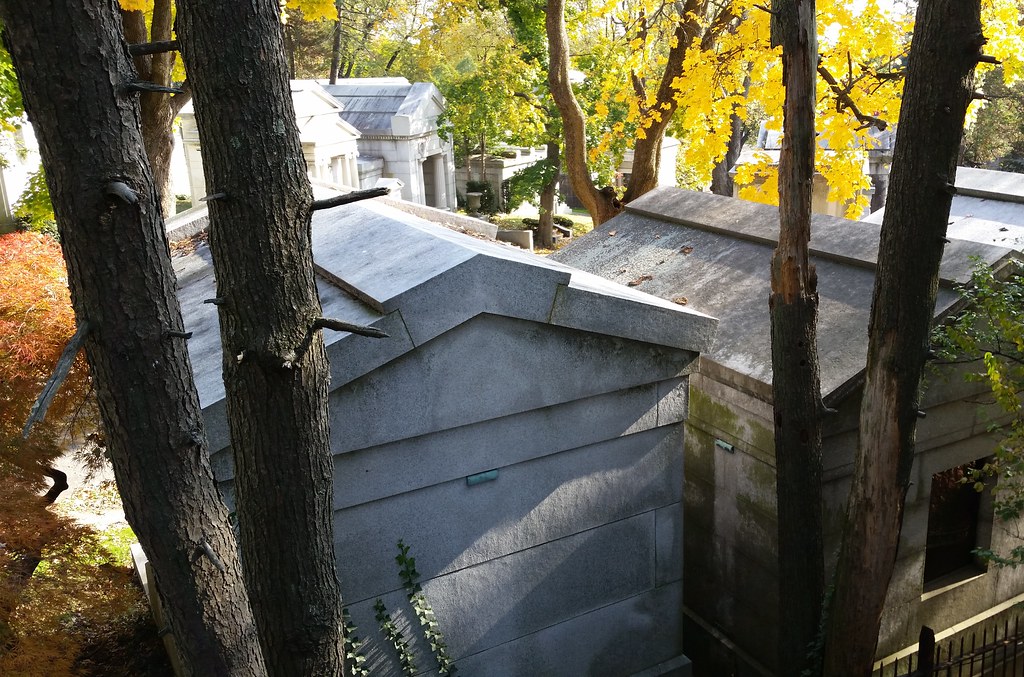
The enormous mausoleums of neighboring Salem Fields Cemetery stand in stark contrast to the uniform rows of modest headstones here at Cypress Hills National Cemetery.

It came right up to me and then jumped the fence into Salem Fields Cemetery.

An officers' section of Cypress Hills National Cemetery and a line of mausoleums in Salem Fields Cemetery

There have only been 19 two-time recipients of the Medal of Honor (the country's highest military honor), and three of them are buried in Cypress Hills National Cemetery: Daniel Daly ("Come on, you sons of bitches, do you want to live forever?"), John Cooper, and Louis Williams (a.k.a. Ludwig Andreas Olsen).
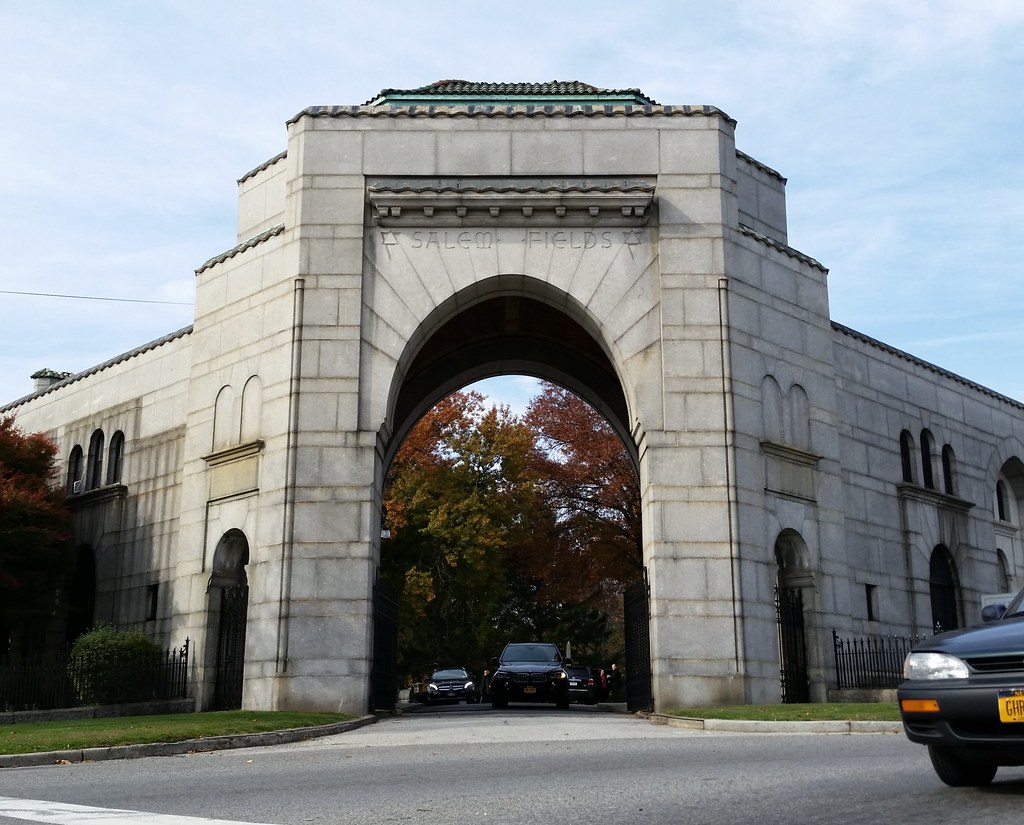
Salem Fields Cemetery, along with neighboring Cypress Hills National Cemetery, belongs to a huge cluster of 17 contiguous cemeteries located along the middle of the border between Brooklyn and Queens.
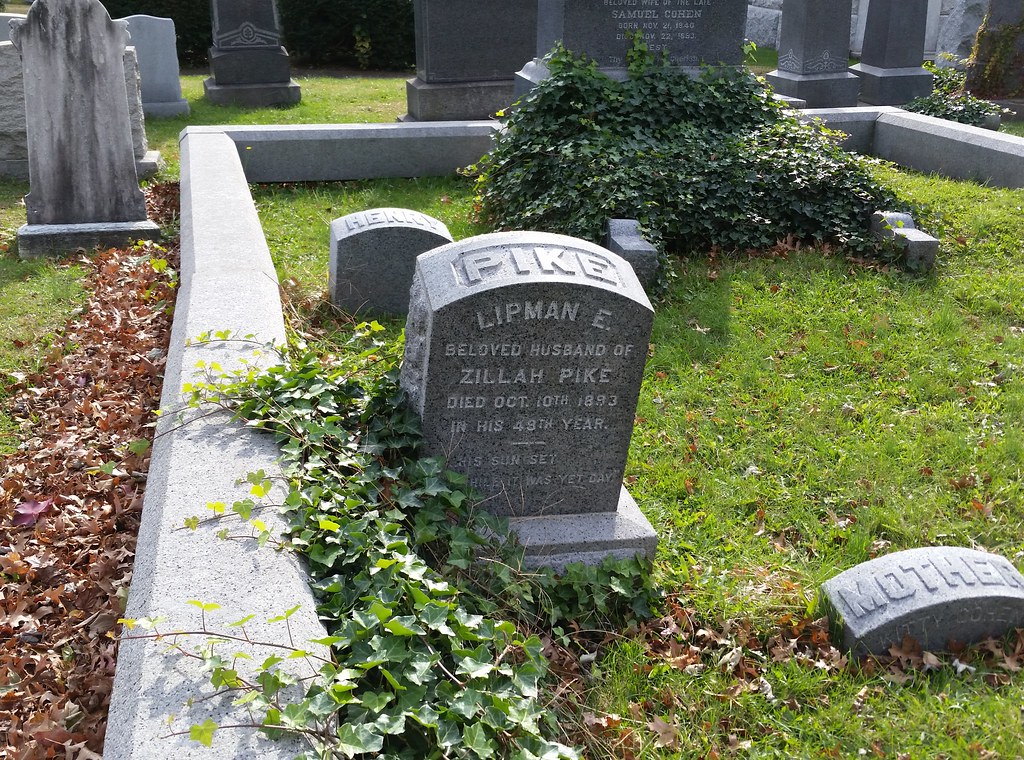
Lip Pike was the first Jewish baseball star. He led the National Association (the first professional baseball league and the predecessor of the National League) in home runs in its first three seasons, 1871-73.
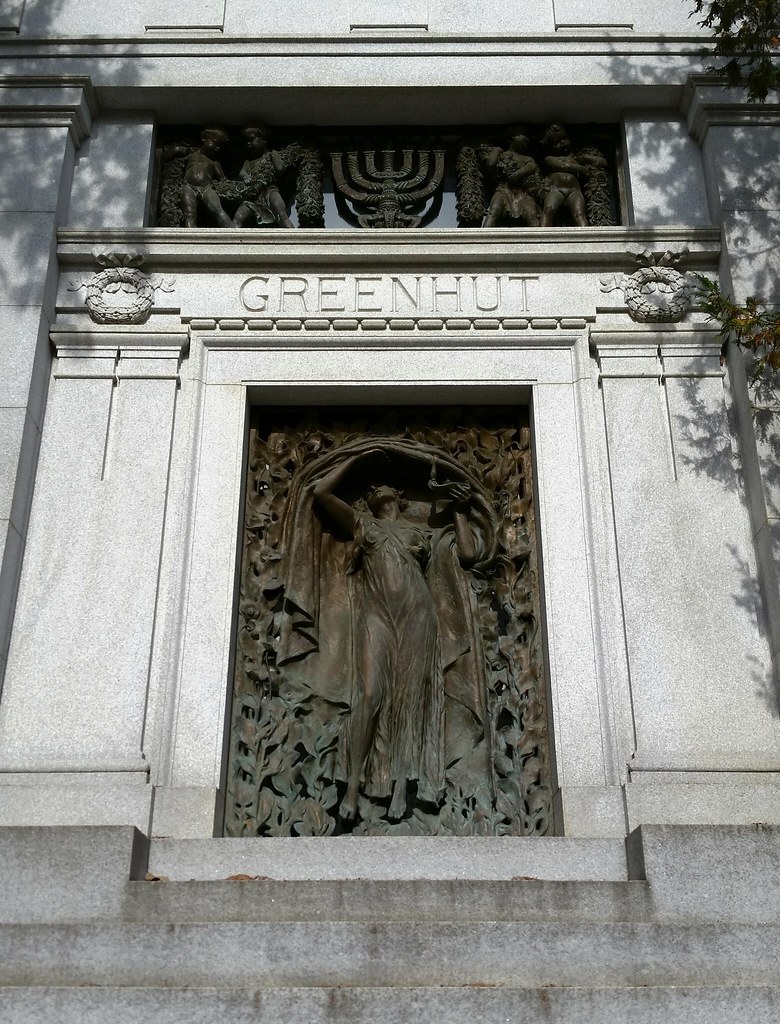
Austrian-born Joseph B. Greenhut was the second man in Chicago to enlist for service in the Civil War following President Lincoln's call for volunteers in 1861, and he rose to the rank of captain before resigning his commission in 1864. He became quite wealthy after the war, establishing the world's largest distillery in Peoria, Illinois (the "Whiskey Capital of the World") and later acquiring control of a major department store company in Manhattan. A 1912 history of Peoria attributed his success in business to his "marked ability to coordinate interests and to combine seemingly diverse factions into a harmonious whole. It is said that difficulties vanish before him as mist before the morning sun." In 1909, he purchased Shadow Lawn, a magnificent New Jersey estate (photos) that was used by President Wilson as his Summer White House (video) for the last two months of his 1916 re-election campaign.
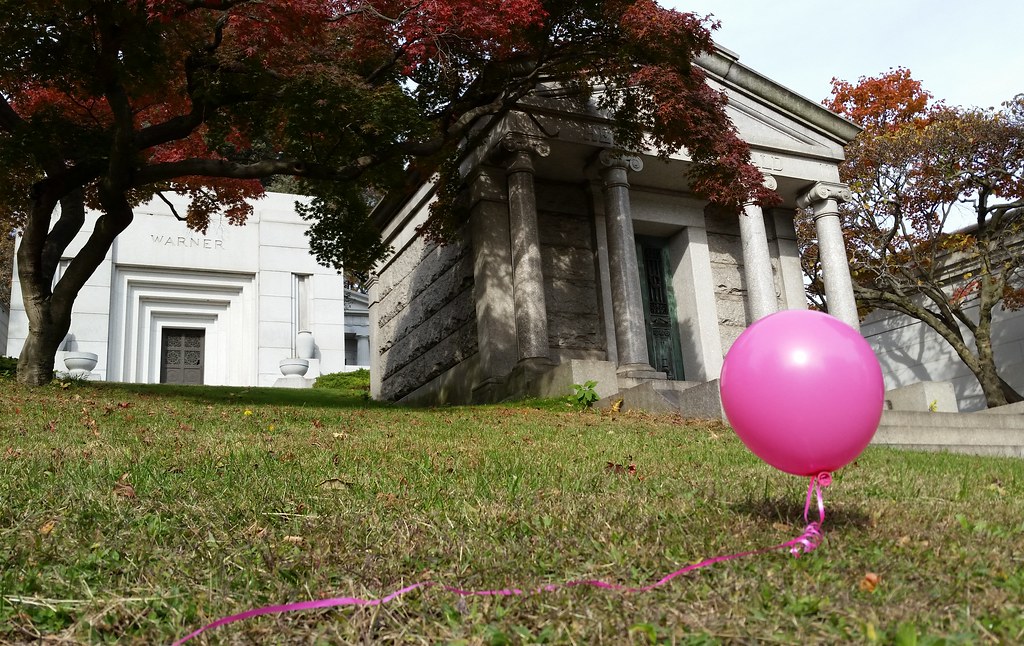
Here in mausoleum-packed Salem Fields Cemetery, cut off from the free-ranging air currents that afforded swift passage across the wide-open plains of Cypress Hills National Cemetery, our itinerant balloon friend has become rather sluggish.
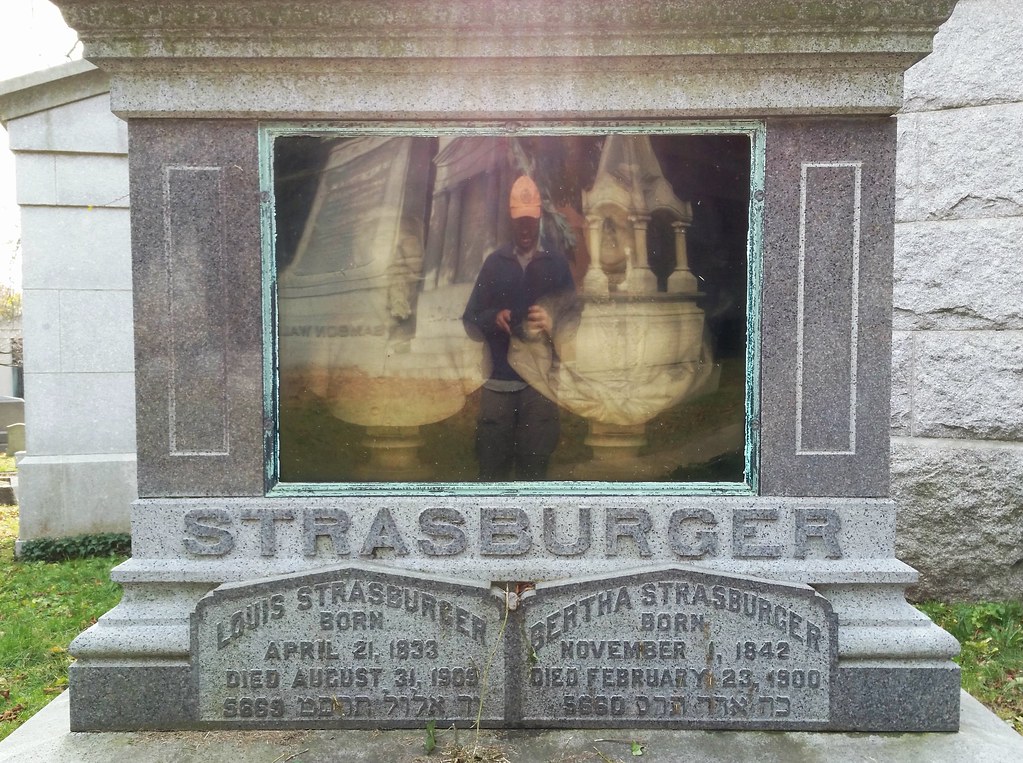
It's tough to see with the reflection, but here's a closer look at the encased busts of Louis and Bertha.
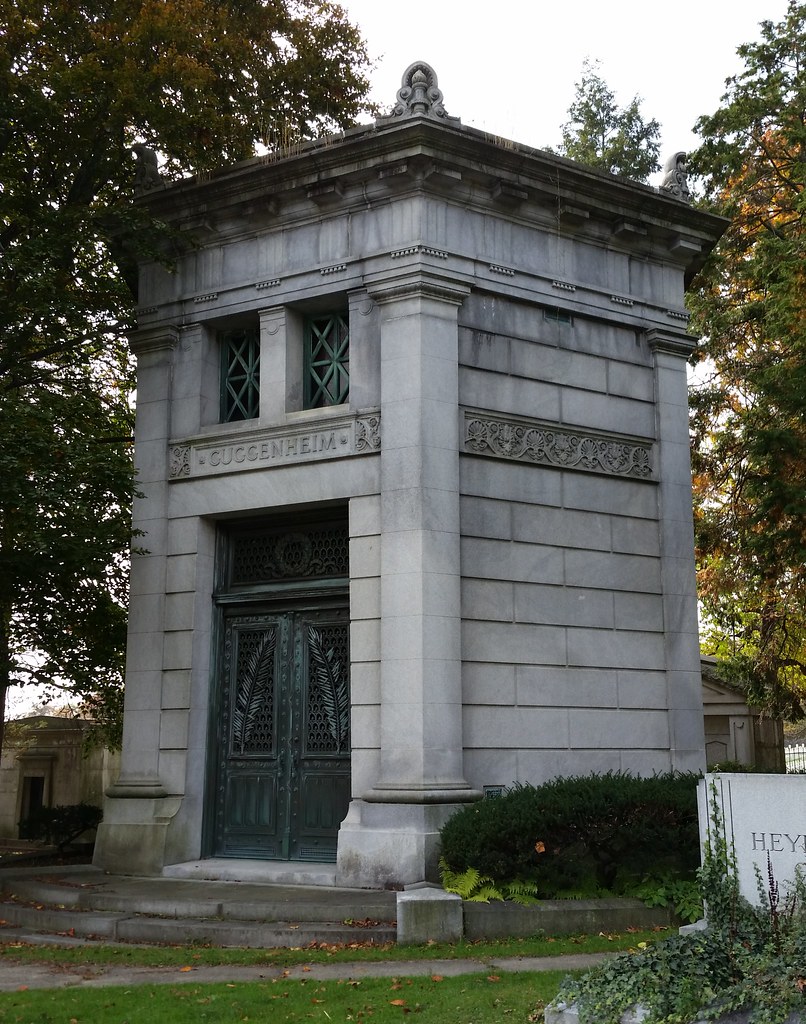
In 1847, Meyer Guggenheim was a 19-year-old immigrant peddler fresh off the boat from Switzerland. By the time he died in 1905, he had become the head of one of the wealthiest families in the United States, having built an enormously profitable mining and smelting empire that he passed down to his sons. (His facial hair, while not quite in the same league as Peter Cooper's or Henry MacCracken's, also deserves a mention here.) His descendants later turned to philanthropy and became prominent patrons of the arts and sciences, the famous spiraling Guggenheim Museum on Fifth Avenue being just one of the many outlets for their fortune.
The family's mausoleum here in Salem Fields Cemetery is often compared to the ancient Tower of the Winds in Athens, but a cursory visual comparison of the six-sided mausoleum and the eight-sided tower reveals that they have very little in common other than a similar general shape.
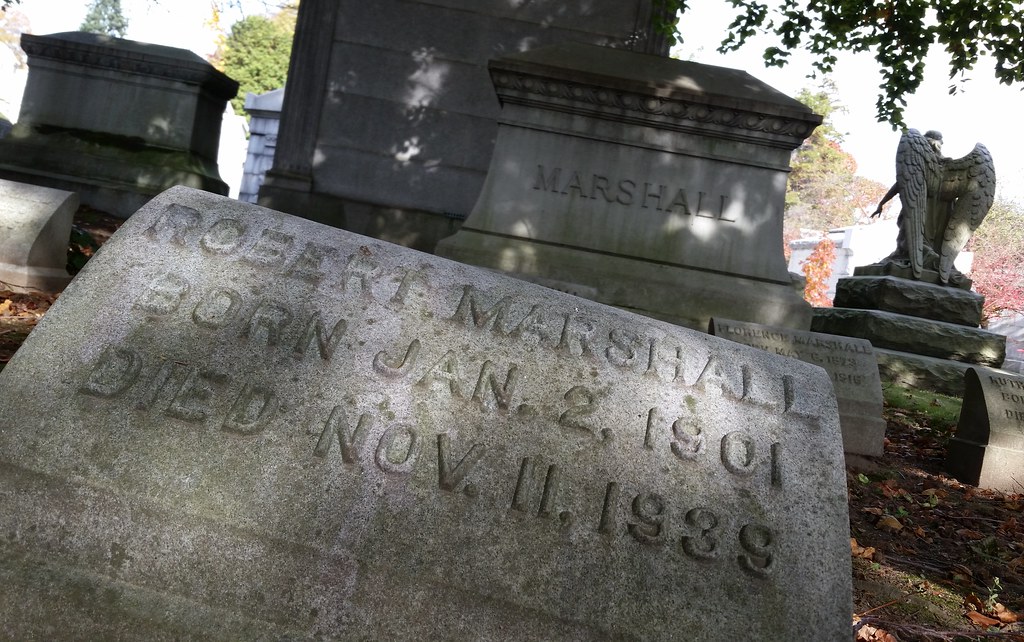
Bob Marshall was a dedicated wilderness advocate whom we first learned about back in Montana, where a sign hanging outside his namesake preserve tells of his famous answer to the question of how much wilderness America really needs: "How many Brahms symphonies do we need?"
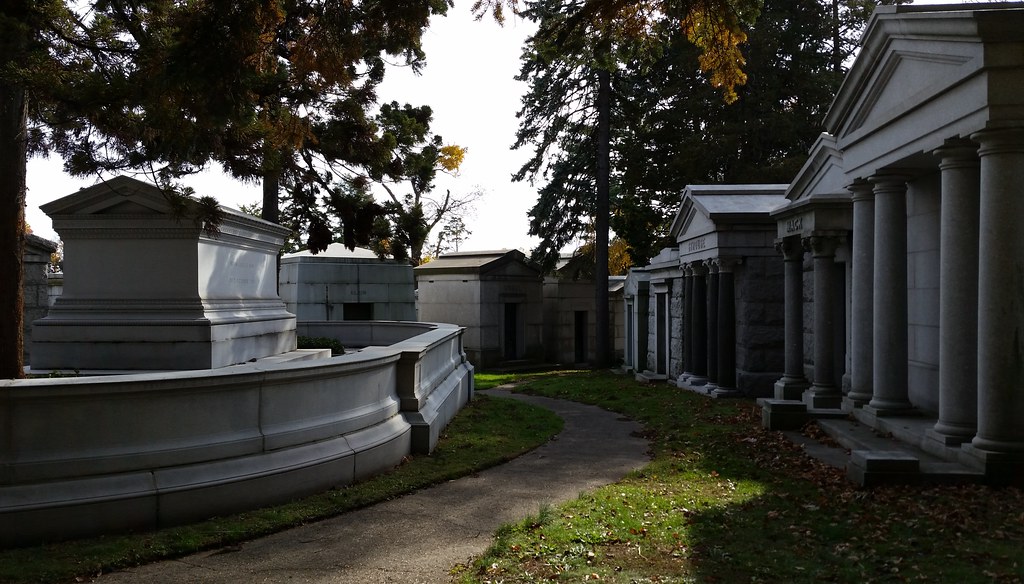
Among New York City's many grand cemeteries, Salem Fields is not particularly well known. But its western section is positively lousy with mausoleums — jam-packed to a degree I've never seen before.
At left, the tomb of Benjamin Altman, founder of the B. Altman & Co. department store and the charitable Altman Foundation, is reportedly a simplified version of the Alexander Sarcophagus (not to be confused with the tomb of Alexander the Great, despite what the previously linked article says).
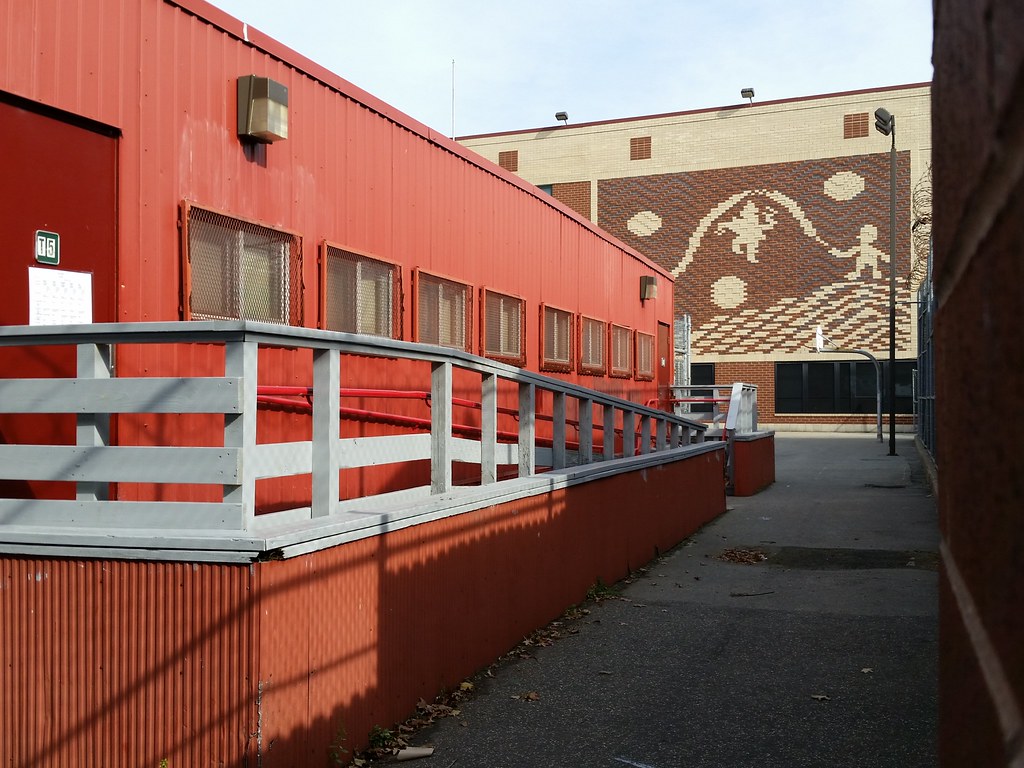
This oddball artwork can be found on the wall (or, rather, is part of the wall) of Brooklyn's PS 7. Here's a look at the left side of it.
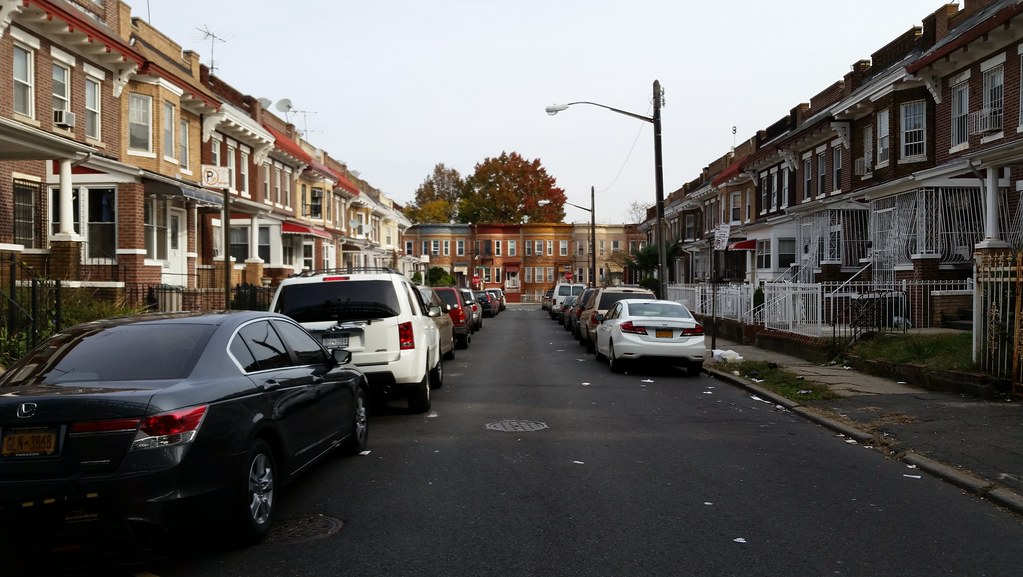
This block-long street and its neighbor to the north, Adler Place (originally called Adelphi Place), were built on the former site of Adelphi Oval, which existed from about 1907 to 1916 as the athletic field of the Adelphi Academy and Adelphi College.

Rick Gomes of the East New York Project believes that this house at 107 Pine Street was built between 1886 and 1893, but that its columns were added at a later date, sometime before 1918, possibly by a carpenter who purchased the house in 1904. He also notes that there's a similarly unimposing house with almost identical columns tacked onto it located just over half a mile from here at 81 Essex Street.
Just across the street from 107 Pine is the old social/worship hall of Blessed Sacrament Parish, built in 1911-12. I wonder if the construction of its impressive columns had any influence on the aforementioned carpenter, or if his columns were already standing then.
In the background at right, you can see a J train on the Jamaica Line.

Built 1924-26. Until he got kicked out in sixth grade, Tony Danza was a student at the parish's school across the street, supposedly hitching a ride to class each day on the back of his dad's garbage truck.

The z-in-lieu-of-an-s has to be in the barbershop's name to officially count.
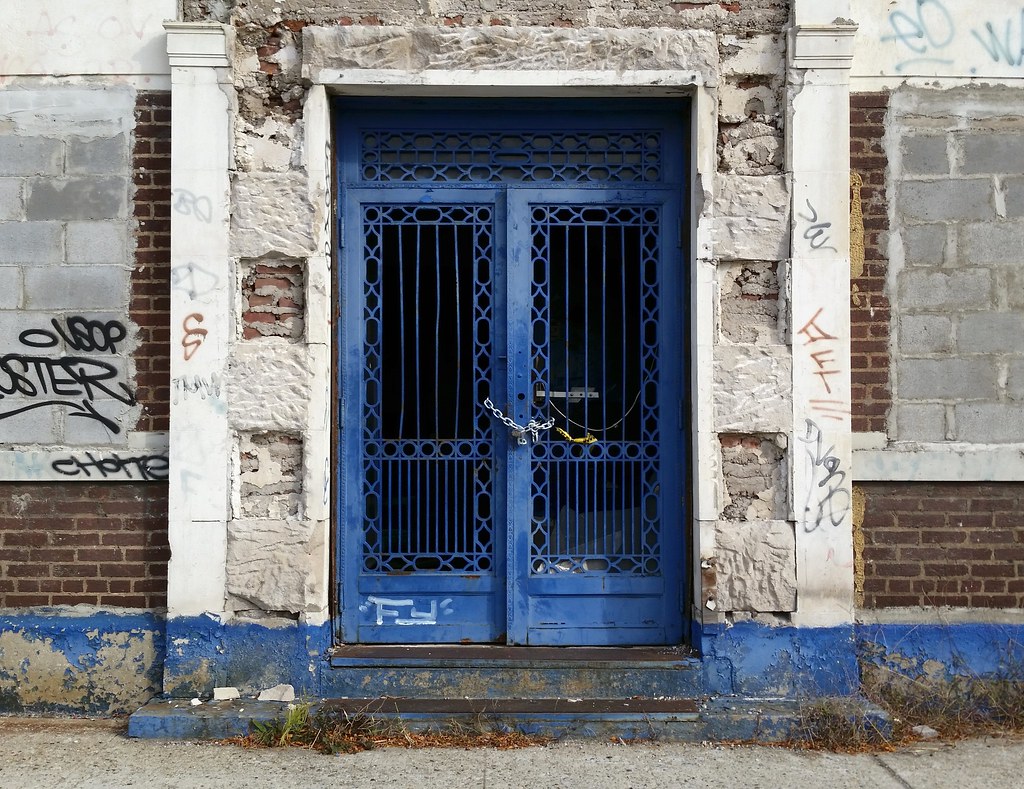
Blue Ridge Farms, whose former processing plant occupies this entire block in Cypress Hills, was once the East Coast's largest producer of prepared salads, and by the 1990s was Brooklyn's third-largest manufacturer (behind Pfizer, which closed its Brooklyn plant in 2008, and Cascade Laundry, which went out of business in 2010). The company had been run by the Siegel family ever since its founding in the mid-20th century, but in 2004, facing some financial difficulties, the Siegels agreed to take on Thomas Kontogiannis as a major investor, which led to a series of shady dealings with him that eventually resulted in his family taking control of the company and selling off all its assets, including its name. (Kontogiannis is currently serving time in federal prison, having been sentenced twice in recent years: in 2008 for laundering bribes for former Representative Randy "Duke" Cunningham, and in 2011 for orchestrating an enormous $98 million mortgage fraud.)
After the demise of Blue Ridge Farms, the company's production complex here in Cypress Hills was left vacant, and was the site of a huge seven-alarm fire in 2012. The burned-out factory is still standing today, a massive, forlorn monument to the downfall of a once-thriving business.
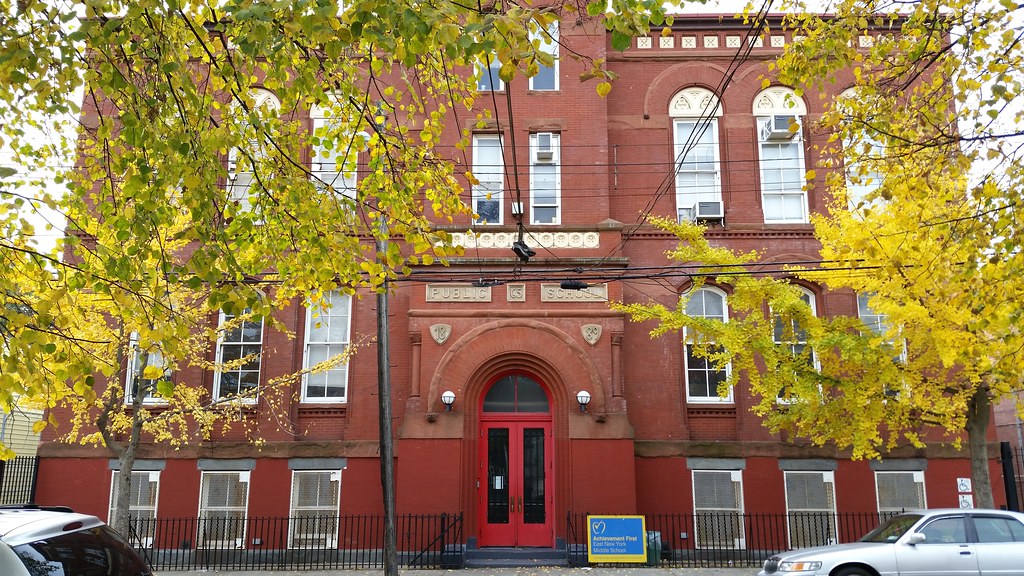
Currently home to Achievement First East New York Middle School (PS 65 is now located in a new building nearby), this school (old photos) dates back to 1870, but most of the structure, including the part you see above, was built during a major expansion in 1889.

from A. Charles, King of New York. Looks like I just missed seeing his house decked out for Halloween.

The door of the truck says "IRON", so I'd guess that the MTA's Elevated Iron Fabrication team is doing some work here on the elevated structure of the Jamaica Line (J and Z trains).
This section of the Jamaica Line between the Alabama Avenue and Cypress Hills stations was originally used by the old Lexington Avenue and Broadway Els, and is said to be the oldest elevated structure in the subway system. The part that runs between Alabama and Schenck Avenues opened in 1885, and the rest of it, including what you see above, opened in 1893.
According to Forgotten New York, a little diagonal beam found on the elevated structure here (mostly obscured from view above, but clearly visible here) is the last remnant of an old connection to the Atlantic Branch of the Long Island Rail Road that was in service from about 1898 to 1917, cutting through the block now occupied by the old Blue Ridge Farms processing plant.

For much of the 1990s, this vacant lot was the subject of a dispute between Blue Ridge Farms, whose former processing plant (visible in the background) is located right across the street, and the city and state governments. The city acquired the land from its previous owner in 1992 through eminent domain with the intent of building a new school to relieve the extreme overcrowding at IS 171, which at the time was sharing its building with PS 7. Blue Ridge, however, wanted the lot for an expansion of its facilities, and threatened to leave New York if it couldn't have it.
The city and state worked out an agreement with Blue Ridge that would allow the company to obtain the desired land in exchange for a slightly larger property it owned next door. Before the swap could move forward, however, a new mayor (Giuliani) and governor (Pataki) were elected, and Pataki decided to block the deal. Finally, in 1997, Giuliani announced that the lot would be turned over to Blue Ridge after all and that a new PS 7 would be built on a different site in the neighborhood. As we've seen, PS 7 did eventually get its new school, but Blue Ridge never built its expansion, and the much-contested lot, still owned by the city, has remained empty to this day.

This place opened during the latter part of Obama's first term, sometime between August 2011 and May 2012. I wonder if its name is an allusion to his acknowledged weakness for cigarettes.
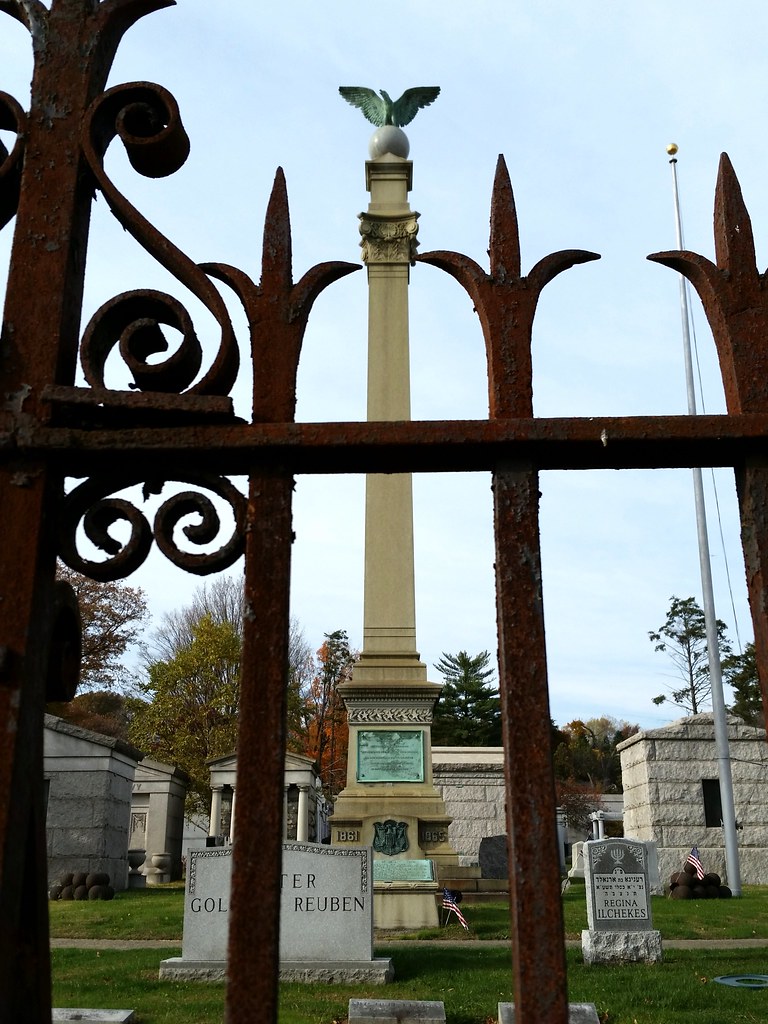
According to a 1904 NY Times article entitled "Shaft for Jewish Soldiers", this monument in Salem Fields Cemetery is "at least one of the first, if not the first, to be erected to the memory of the Jewish soldier who gave his life for the preservation of the Union." The plaque at the base of the obelisk reads: "To the memory of the soldiers of the Hebrew faith, who responded to the call of their country and gave their lives for it's [sic] salvation during the dark days of it's [sic] need, so that the nation might live."
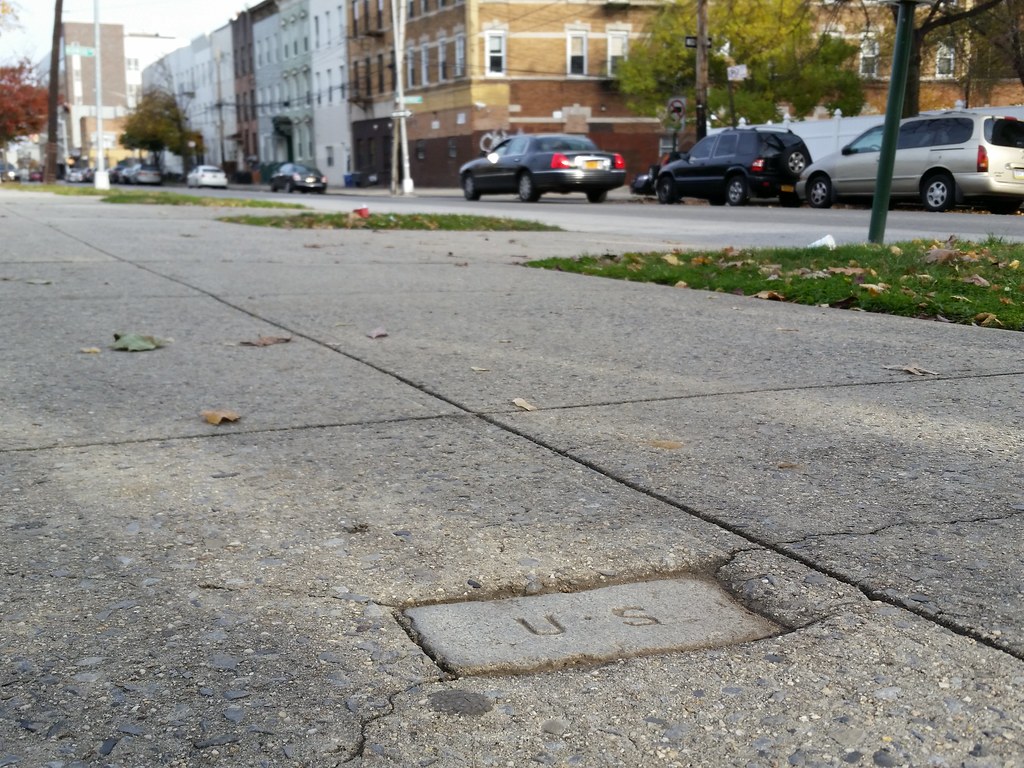
Perhaps this block embedded in the sidewalk outside Cypress Hills National Cemetery was meant to identify the cemetery as federal property.
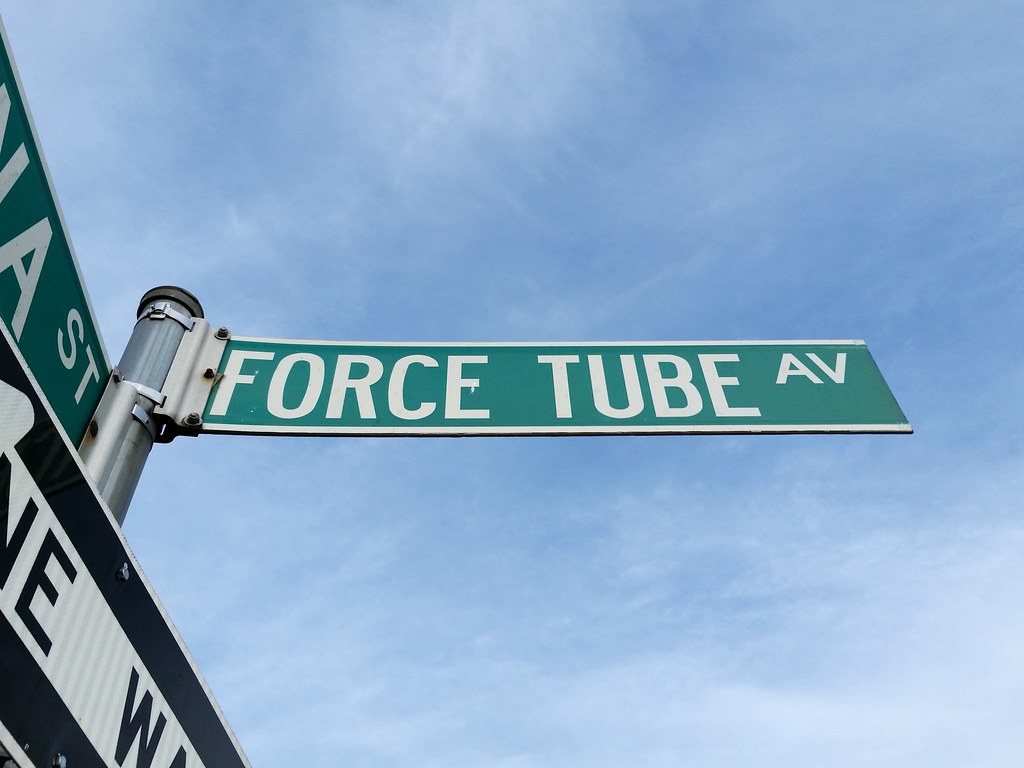
The greatest street name in the city! (Sorry, Featherbed Lane.)
During the latter part of the 19th century and into the 20th, most of Brooklyn's drinking water came from farther east on Long Island. It was carried toward Brooklyn through an underground aqueduct and was then pumped up to the Ridgewood Reservoir. The water's path to the reservoir can be easily deduced by looking at a map, thanks to a couple of fitting street names: Conduit Avenue/Boulevard follows the path of the aqueduct, and Force Tube Avenue traces the route of the pipes through which the water was pumped up to the reservoir.
As it happens, the original pumping station (1924 aerial view) near the foot of Force Tube Avenue stood on the now-vacant lot that was so highly coveted by Blue Ridge Farms in the 1990s, as well as on the adjacent property that Blue Ridge was willing to exchange for that lot.
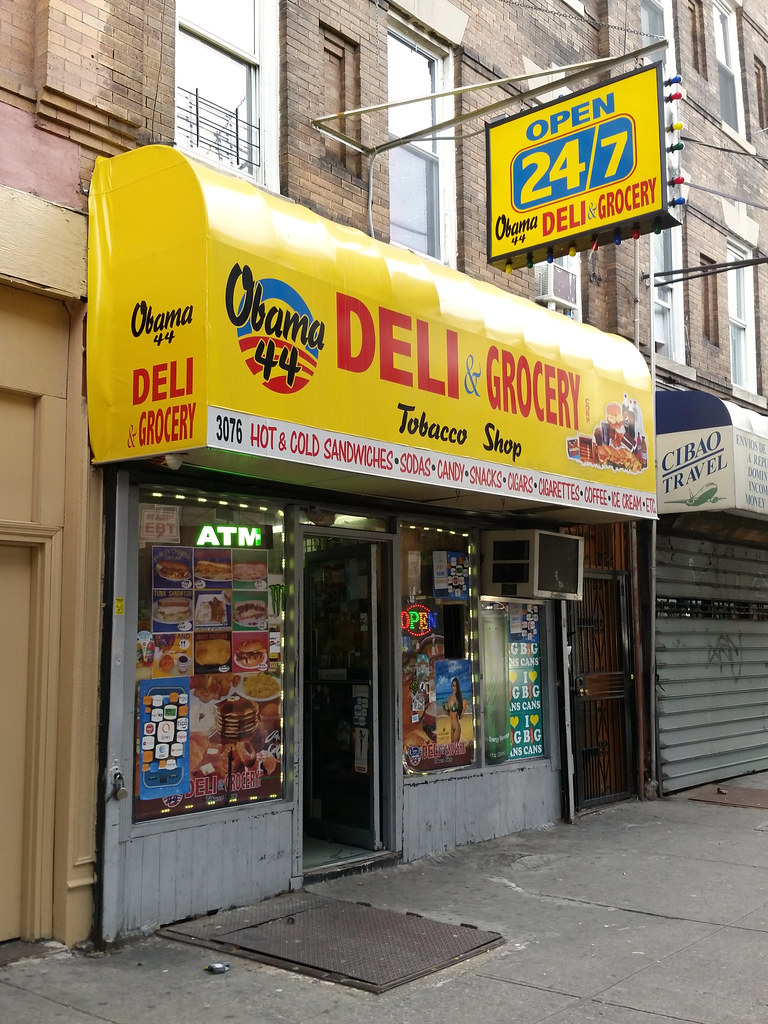
This is the second establishment we've seen today named for our current (and 44th) president. It's been in business since sometime between August 2011 and September 2013.

One of a few odd scenes painted on the wall of this C-Town grocery store

The strangest of the aforementioned C-Town murals
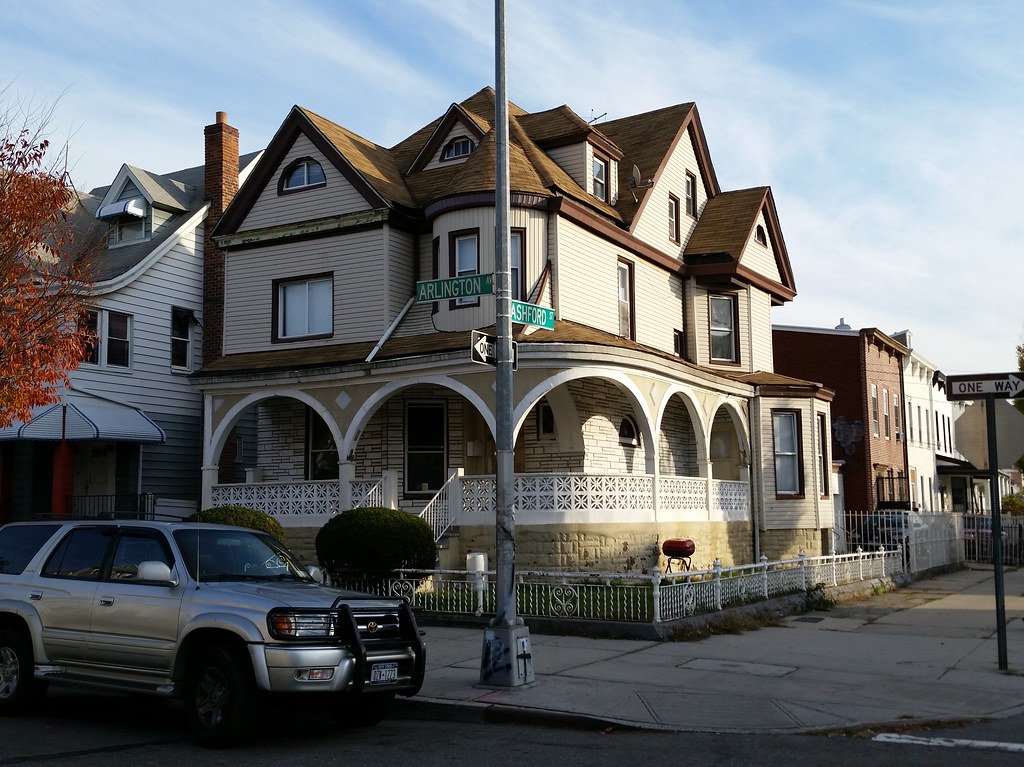
Here's some info about this house, as well as some old photos of it. And here's a little historical tour of this stretch of Arlington Avenue, supposedly once known as "Doctors' Row".
Incidentally, I learned that Arlington Avenue is named for the famous Arlington National Cemetery in Arlington, Virginia. That might seem like an odd source of a name for a street in Brooklyn, but a glance at the map reveals that the eastern end of Arlington Avenue lies just three blocks away from Cypress Hills National Cemetery.

Constructed in 1895, PS 108 (old photos) was designed by James W. Naughton, who was the architect of more than 100 schools during his tenure as Brooklyn's superintendent of school buildings from 1879 to 1898. We've already seen another of his designs today: the 1889 expansion of the former PS 65.
PS 108's secondary name, the Sal Abbracciamento School, honors a longtime neighborhood resident who successfully led the fight to save both PS 108 and PS 65 from demolition in the 1960s.

